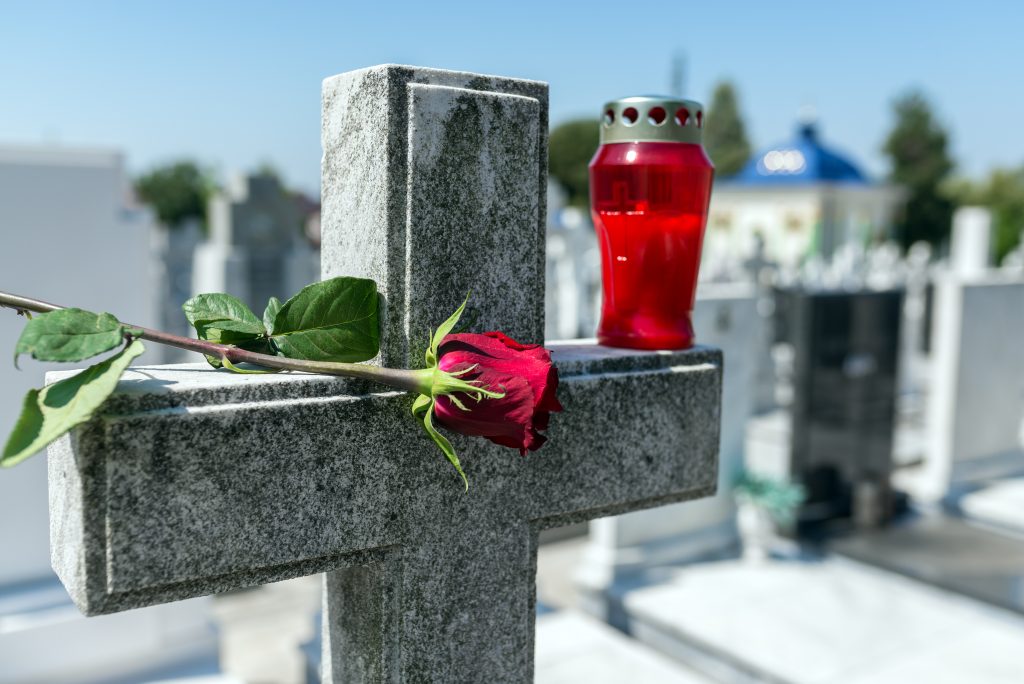Filipinos have a surprisingly colorful culture when it comes to the dead and funerals. Due to nearly 400 years under colonization, these traditions are an interesting mix of indigenous and Western elements. There are also some Chinese influences added through the centuries. Let’s take a closer look at the various Pinoy funeral customs you have encountered and see what they are about.
Pinoy funeral customs no. 1: Do’s and don’ts during a wake
Pinoy funerals have a surprisingly long list of dos and don’ts for people who are attending. Many of these come from Chinese customs that got mixed into our local traditions. While not many might practice these now, you will often still hear older people remind others of these rules.
No tears on the casket

While crying for a dearly departed is always going to be a part of any funeral, many Pinoys believe that you shouldn’t cry over the casket itself. They believe that tears falling on the top of the casket will make it harder for the deceased to move to the afterlife. As such, you would want to have at least a handkerchief to catch your tears.
Never take a bath inside a house where the dead is
If you have ever stayed for days at someone’s home funeral, you will likely be told not to take a bath in the house where the casket lays. This is even if you are a relative. People believe that doing that will put you in line as the next one to die. You will instead have to take your bath in another house.
Never wear red at wakes
This one stems from the old Chinese belief that the color red is a symbol of celebration. As such, if you go wearing a red dress, it’s as if you are celebrating the death. People will then advise you to dress appropriately before going out or admonish you for the disrespect.
Relatives should not see guests off
Another common rule that you will notice is that the relatives of the dead don’t see leaving guests off. This rule is due to believing that doing so is bad luck. Thus, it would be courtesy on the part of the guest to tell the relatives that they are leaving. Relatives would then acknowledge and return to attending to the other guests.
Pinoy Funeral customs no. 2: Placing things in and on top of the casket
Filipinos also place a variety of things on top of the dead’s casket. Each of these things has a certain symbolism relating to the dead and the family’s wish for their soul’s eternal repose. Note that there are also more specific beliefs about this in different regions.
Placing a rosary in the hand of the dead

Since a large portion of the Philippine population are Catholics, a rosary holds a special place in their beliefs. Thus, relatives place a rosary in the hand of the deceased for the whole duration of the wake. The rosary serves as their guide in the journey to the afterlife. After the burial, the rosary is then torn apart to prevent subsequent deaths in the family.
Money in the hand of the dead
This Pinoy funeral custom also follows the idea that the deceased will need stuff in their journey to the afterlife. The money is their fare for their journey. The practice also serves as a final blessing from the dead to their family. After the burial, each family member takes one bill from the money pile. They usually don’t spend it, keeping it instead as a sort of good luck charm.
A chick on top of the casket

If you have attended the wake of someone who was a victim of a crime, you will likely encounter this familiar sight. The family of the deceased will also put some grains of rice for the chick to peck on. Filipinos believe that the sound of the chick’s pecking will reach the conscience of the perpetrator, making them confess their crime. Interestingly, there are many claims that this does work, which is why the practice is still common.
Pinoy funeral customs no. 3: Burial customs
During the dead’s burial rites, many Filipino families typically do any of the following rituals. These rituals serve to bid the departed a final farewell and wish for their souls to have a safe trip into the afterlife. Meanwhile, the family of the dead get their closure as they prepare to move on.
Passing under the casket
When the dead’s casket is about to leave the house for the funeral march, it is customary for some relatives to pass under it. This ritual is supposed to help them return to their regular lives easier. It also helps prevent other deaths from occurring within the family.
Avoid bumping the casket

Pallbearers are also careful not to bump the casket on anything when moving it outside. It is said that other deaths in the family will occur if it happens. To prevent more deaths from happening, some people would then break a ceramic plate.
Passing a child over the casket
Once the casket is lowered into the grave, many Filipinos would often have children carried over it. They are usually the dead’s kids or relatives but sometimes even other kids who are present. This ritual prevents the dead from haunting them in their dreams.
Pinoy funeral customs no. 4: Pasiyam, 40 days, and babang luksa
One fascinating thing about Pinoy funeral customs is that the after-burial mourning comes in different stages. These stages follow a set number of days and have their rituals to follow. The stages are pasiyam, 40 days, and babang-luksa.
As the name implies, pasiyam follows the nine (siyam) days after the burial. During each day, relatives and other mourners offer prayers to the dead until they complete a novena. On the ninth day, relatives hold a service at the house of the departed, followed by a small salo-salo.
Meanwhile, 40 days marks the time that the dead’s spirit finally passes to heaven. This idea references the time between Christ’s resurrection and ascension to heaven in Catholic teachings. As is with the earlier pasiyam, a mass and a special meal are held to mark the occasion.
Lastly, the babang-luksa marks the departed’s first death anniversary. The occasion also signifies the end of the mourning period. Like the other two stages, the family holds another service to commemorate the occasion. They are also expected to return to their normal life routines by this time.
Pinoy funeral customs show respect to the departed in different ways
The various Pinoy funeral customs listed here show not only how we honor the dead. It also shows how closely-knit Filipino families are, even in death. As you witness these customs, you will also have a greater appreciation for our culture, including those relating to the dead.

